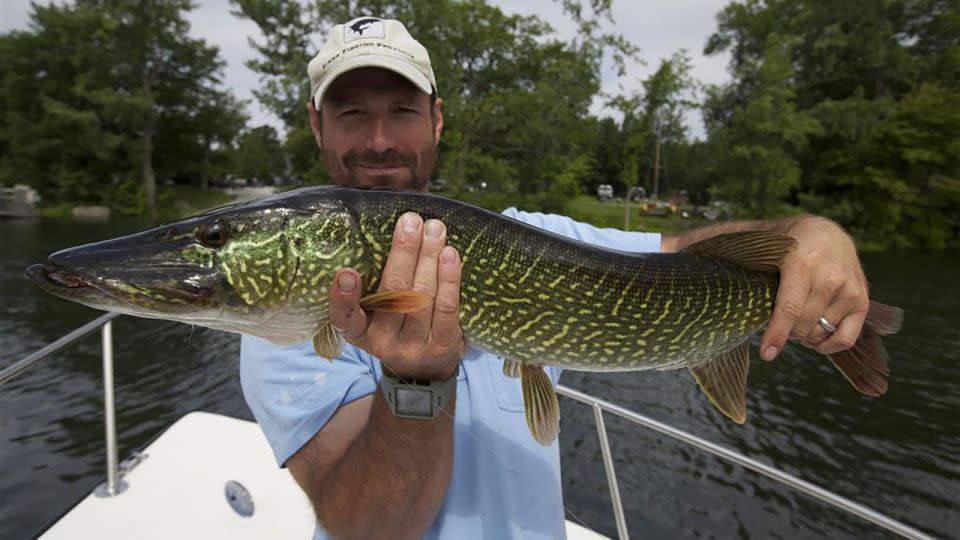The bear that scientists shot in the Canadian Arctic in 2016 was a biological mystery. It looked like a grizzly bear, with long claws and a prominent nose, but most of its fur was white.
You could call it pizzly or perhaps grolar bear. In both cases, scientists determined that the animal was the rare cub of a polar bear mating with a grizzly bear. As the Arctic melts and polar bears move more and more on land, sightings of these hybrids are increasing.
Pizzly bears were not born en masse, said Charlotte Lindqvist, a biology professor at the University at Buffalo whose lab focuses on evolutionary genetics. Accounts of bears are mostly anecdotal, and it is unclear how widespread this phenomenon is.
For example, eight of the bear hybrids were found to be the offspring of a particular female polar bear with a predilection for male grizzly bears.
But as global temperatures rise and Arctic ice melts, polar bears’ chances of encountering and mating with other bear species will increase.
“This may just be the beginning,” Lindqvist told CNN. “The pressure continues and we can clearly see in some areas that polar bears are spending more time on land as sea ice melts. Brown and black bears are encroaching more on Arctic habitat. And I think this will expand further.”
Gene exchange between bears and other animals and plants (and humans) has been occurring for centuries. Lindqvist’s research found evidence of gene exchange between polar bears and brown bears dating back 150,000 years; this suggests that the species came into contact during earlier natural changes in climate. Scientists are also investigating potential hybridization between arctic foxes, a northern species adapted to the cold, and red foxes.
But the most important thing Lindqvist and other scientists are watching is how much this period of human-induced warming – by far the fastest in tens of millions of years – will bring species into contact with each other.
Daniel Rubinoff, professor of entomology and director of the University of Hawaii Insect Museum, said hybridization can be a good thing in some cases, helping species adapt to a rapidly warming planet.
For others, this could mean the end of the road.
“This doesn’t mean that some hybridization is unnatural or even something that goes on forever,” Rubinoff told CNN. “But the problem is, it’s too fast. “This is not good, and climate change will not benefit our planet’s biodiversity or ecosystems overall.”
An unusual fish
State fisheries biologist Shawn Good estimates the hybrid first appeared in Vermont lakes around 2009 or 2010.
The long, tubular fish are the unintended offspring of two different species; It has a combination of the green-yellow patterns of the northern pike and the black scales that resemble chains, the signature of the chain pike.
Good realized that the species were unknowingly mating with each other, and that Vermont’s warming winters and springs were the culprit behind the genetic confusion.
Northern pike begin spawning in early April when water temperatures are in the high 30s and low 40s, while chain pike usually emerge a few weeks later when the water warms. However, in swampy areas where both species spread their eggs and milk, spring warmth comes earlier, leading to accidental hybridization.

Hybrid fish have become common in Vermont lakes and are regularly caught by fishermen and state scientists. Good estimates are that he sees dozens of them a year.
Another troublesome sign for Pisces: the hybrids are sterile and cannot reproduce. Good said necropsies performed on the fish showed that their reproductive organs were immature.
This does not yet mean danger to the unintentional parents of hybrids. Enough pickerel and chain pickerel are still spawning to keep these rods strong; Currently, hybridization of fish occurs at the end of the pike spawning season and at the very beginning of pike mating.
But Good is aware that this could change.
“There is a real possibility that the abundance and numbers of such hybrids will increase as our spring temperature regimes change over time,” Good said. “If the weather warms faster, these fish, which are a few weeks and a few degrees apart, may find themselves spawning in a much tighter window of time.”
In many of these cases, cold-adapted animals such as polar bears, arctic foxes and pike are seeing more warm-weather animals encroaching on their territory, Rubinoff said.
“In those situations, I think there’s going to be a loser,” Rubinoff said. “I would predict that in most of these cases, it will be cold-adapted species.”
They are losing their habitat
Not all scientists agree that climate change is accelerating species hybridization. Some argue that another major factor contributing to both hybridization and species extinction is habitat loss as human development encroaches on the natural world.
“I would argue against the idea that hybridization between animals or plants or fungi or things like that might increase in frequency because of climate change,” said Michael Arnold, a professor of genetics at the University of Georgia. “Climate change will cause the loss of some habitats. “But these living spaces can be regained if we do not build cities on them.”
Arnold, like other scientists, believes that the current extinction rate is exponentially higher than in the past. Rubinoff argued that habitat loss is the primary driver, but that climate change is accelerating the pace.
“The idea is that this has always happened. What’s faster is speed,” Rubinoff said. “It’s like people say extinction has always happened. That’s true, but it’s never been this fast. That’s what breaks down ecosystems; they can handle some change, but you can’t just ramp it up.
For more CNN news and newsletters, create an account at CNN.com